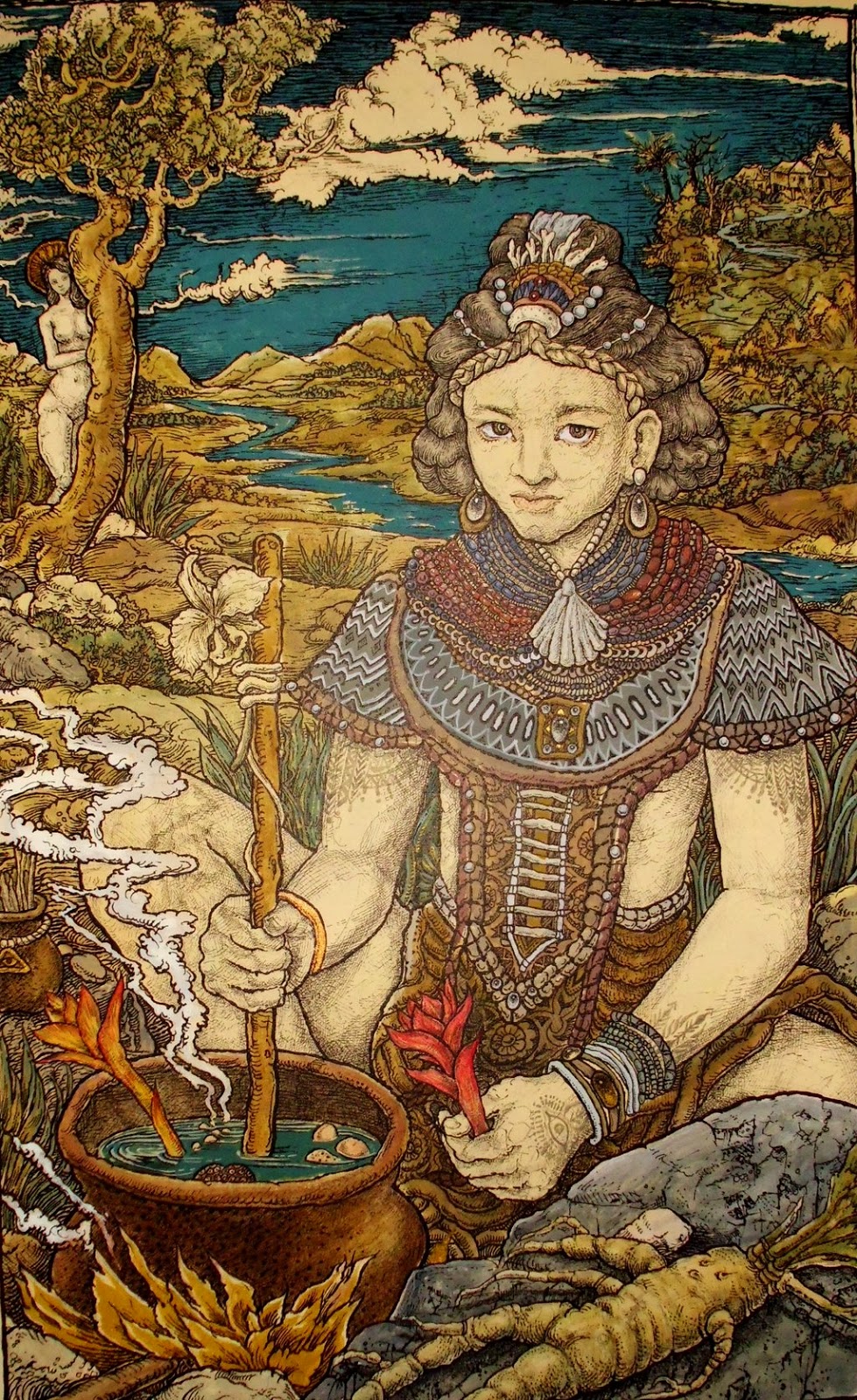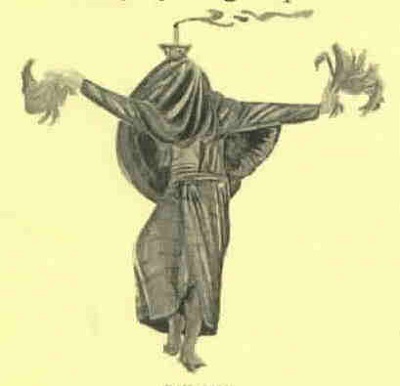The Babaylan
There will always be a subtle yet vital role that females play within the intricate tales of myths and mysticism. Among all the creations, they are the only one who are given the power of procreation; the ability to conceived life. Such qualities are usually attributed with omnipotent gods and that is why being a woman escalates an individual to a certain degree that makes them special among the people of their society. It should be noted that this examination of the historical role of women in the precolonial Philippines and the gender roles, including the ability to give birth, is not meant to demean the modern ideology surrounding gender identity.
Babaylan or the priestess class of ancient Philippines was considered to be one of the most important individuals in a community (second only to Datu or the Head Chief), the Babaylan was an exceptional class exclusive to women during that time in the Visayan and Tagalog societies. Other ethnolinguistic groups in the Philippines have traditionally had male and female shamans. The Visayan Babaylan and Tagalog Katalonan are known for their supernatural powers and broad knowledge of both mortal and spiritual lore. Besides those, studies also shows that they were capable fighters and also held vast political functions.
However, the sudden shift of leadership from matriarchal to patriarchal in our nation brought by the influence of foreign invaders is a prelude for a critical change that would drastically affect the the traditionally female-dominated class of Babaylans.

Enter the Male Babaylans
According to Maria Milagros Geremia-Lachica’s Panay’s Babaylan: The Male Takeover, some of the Spanish friars managed to chronicle religious practices of our ancestors headed by women. Yet they also found male priests who preside during sacred ceremonies. These male Babaylan were properly called “Asog”. Fray Alcina, one of the Friars who took a keen interest on the early religion of our ancestors, elaborated Asog as follows:
“….impotent men and deficient for the practice of matrimony, considered themselves more like women than men in their manner of living or going about, even in their occupations…”
Alcina also added that society might tend to have degrading outlooks towards a man who is found incapable of partaking his role as a male, for it is expected of him to take part in the practice of matrimony and to beget children. For “effeminate men” who found themselves in this kind of position, becoming an Asog is an alternative way to claim what would be perceived at this moment in history as their lost honor. Their traits and life style which lean towards being a female categorically puts them appropriately to the woman-centered class of Babaylan.
Etymological Origin
The term Asog might sound very unfamiliar but in fact some of the old folks today still use this word to refer to a barren or sterile women. From contemporary Hiligaynon, Asog is a term given to female animals that can’t reproduce. In Aklan, the term means a female acting like a male or a “boyish” woman. Notice that Asog is entirely connected to women and men is out of context with men. This is perhaps due to the perception of folk people that an Asog is feminine in manner and appearance. They are “women” in nature but biologically not female and incapable to bear offspring. This further leads the idea that our ancestors might tolerate effeminacy because of their association to the Babaylan.
Babaylan and Asog shared similar functions in their society. The difference lies on the idea that Babaylan are biological females who have the natural gift of procreation while Asog are biological males who imitate both the appearance and characteristic of the female Babaylan, but can’t reproduce or give birth – unlike their counterparts.
The introduction of Asog to the hierarchy of the female class of Babaylan didn’t just end the common notion that Babaylan is for “Babayi or Babae lang” (for women only) but it also turned out to be a phase that would lead to men claiming the crown of leadership from the women. This changed the rules of the game for the Babaylan.

Asogs During the Revolution Era
Based on historical records, revolts against the colonizers were mostly spearheaded by military men or individuals with considerably high power in their society. Little did we know that in a remote area of Negros Island, a major uprising was led not by gun totting soldiers nor Illustrados, but by the robe/skirt clad Asog. Around 1887 – 1890, Ponciano Elofre or known by his alias of “Buhawi” (god of the four wind) fought back against the tyrannical Spanish soldiers that mistreated his community. Another male Babaylan that goes by the name of Gregorio Lampinio of Lambuanao, Iloilo joined the revolutionary group of Hermenegildo Maraingan in attacking Spanish territories in Capiz.
At this point, the male leadership had become more apparent as Babaylans due to the impact they had during the revolution era. Asogs such as “Gregorio “Dios” and Papa Isio are also noteworthy among the lines of well known Babaylans. The only female Babaylan that claimed noteworthy attention during this period was Estrella Bangotbanwa (also known as “Tagasod Kang Kalibutan” or Caretaker the World) from Panay who invoked heavy rains that ceased the drought which nearly perished the town of Miago and San Joaquin, Iloilo.
Ms.Geremia-Lachica explained in her work that the ousting of female leadership of Babaylans is due to the fact that Catholicism, which is originally a male-led religion, was slowly assimilated by the natives. The ideology of male leaders (such as priests) were becoming more acceptable and appropriate since they need leaders who functioned like those of the female Babaylan (healers who have supernatural abilities) yet equally have the capacity to lead revolts and war against the oppressive invaders. Asogs could then finally lead the Babaylans, as well as their community, to win back their freedom.
Up to this day, some groups of Babaylan are still headed by men, although they are no longer called Asog.
Equality and not Biases
It is surprising to think that the common notion of Babaylan being only female is actually wrong in a sense that they also opened their arms for male members. It is presented in modern social movements that this acceptance was because gender did not matter, but it could also have been because the male might have lost their pride and honor in the eyes of their community due to the inability or willingness to act or perform “male” roles. In turn, some of them ended up leading the Babaylan to fight for our nation’s freedom.
This showcases that even before a civic government was established in our country, our ancestors already had this innate sense of equality among themselves. They allow individuals whom they saw as capable and trustworthy to preside and guide them without any biases on their gender.
Perhaps in this age where gender issues – both in political, and religious/spiritual areas – are put into extreme measures, it’s better for us to take a retrospective pondering and start learning from our ancestors. They might have been far from the pinnacle of civility and their surroundings were not the the safe and sound society we enjoy now, yet some of their values are worth emulating by civilized people. This equality was a value that remained among them despite their challenges and is a value that should also survive civilized progress.
Currently collecting books (fiction and non-fiction) involving Philippine mythology and folklore. His favorite lower mythological creature is the Bakunawa because he too is curious what the moon or sun taste like.


